Walmart unveils $9 billion makeover for 1,400 stores – here’s what to expect from redesigned locations
- The retailer reopened 117 locations in 30 states at a cost of half a billion dollars
- Walmart has invested $9 billion in upgrading 1,400 stores over the past two years
- The stores have new “dollar shop” areas and touch-and-feel displays
Walmart has unveiled more than 100 remodeled stores — part of a $9 billion investment over the past two years to upgrade more than 1,400 of its 4,700 locations nationwide.
The chain is dedicating more of its floor and store space to online grocery pickup and delivery at its modernized stores, and has added new “dollar stores” in addition to the cash register.
Walmart pharmacies have been moved to the front of the renovated stores, the company said in a statement rack Monday, with new private screening rooms for pharmacy consultations and services.
The retail giant reopened 117 stores in 30 states at a cost of half a billion dollars in an effort to boost sales.
Hunter Hart, senior vice president at Walmart Realty said, “Each store is designed to provide a more modern shopping experience and improve the lives of our associates and customers from the moment they enter the new space.”
In addition to a fresh exterior, signage, more shopping carts and more takeaway options for food and drinks, other changes include touch-and-feel displays for household items such as bedding.
The retailer said it was pulling large and bulky merchandise from boxes into corner displays so shoppers could imagine how it would fit in their homes.
Digital touchpoints have also been placed in the store to provide more information about products and services, the company said.
Walmart also said customers will benefit from more checkout options, including both staffed checkouts and self-checkout, in the new stores.
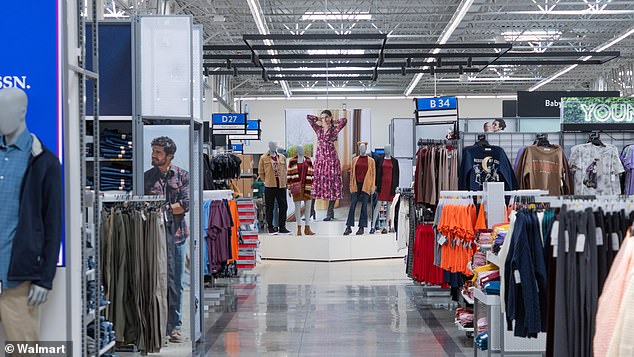
The retail giant reopened 117 stores in 30 states at a cost of half a billion dollars in an effort to boost sales
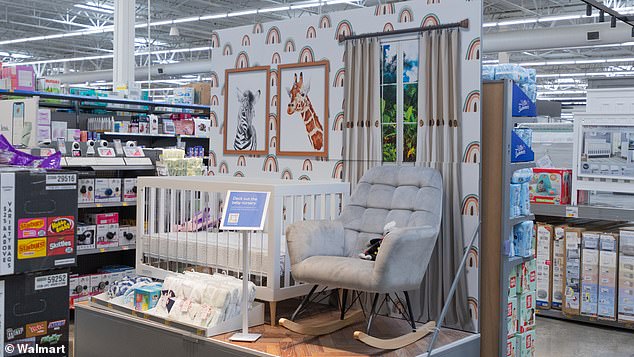
The retailer said it was pulling large and bulky merchandise from boxes into corner displays so customers could imagine how it would fit in their home
The retailer is making more room in the new stores for online grocery pickup and delivery, as its e-commerce activities are growing.
According to August figures, the company’s US e-commerce sales grew 24 percent from the year before.
This is compared to 6.4 percent growth for comparable store sales.
It comes after it emerged that Walmart rival Target was testing a major self-checkout change at a number of its stores in a bid to speed up the shopping process for customers.
The retailer is limiting self-service lines to customers purchasing 10 items or fewer – to try to reduce the long lines that can build up in the store.
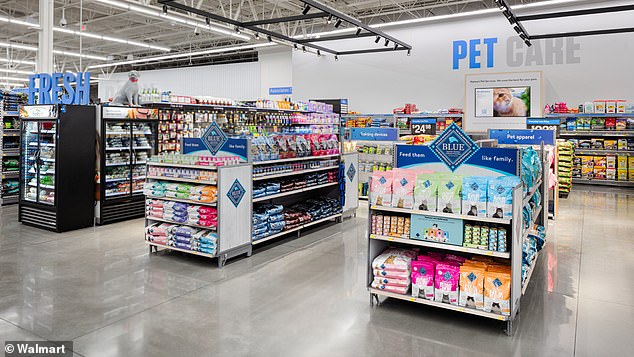
Walmart has added more food and drink pick-up options at its redesigned stores
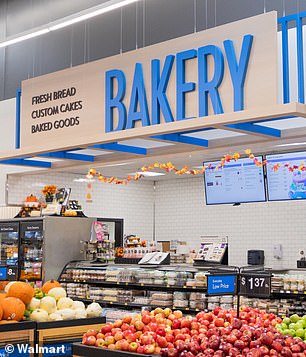
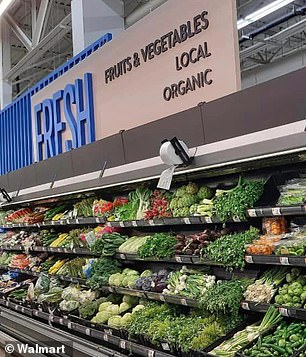
The redesign also includes updated interiors and new signage that the company says creates a “friendly, welcoming atmosphere.”
The company confirmed to DailyMail.com that it was testing the item limit to reduce wait times and better understand guest preferences.
It did not confirm the specific target locations where the trial took place, or whether the policy would later be rolled out nationwide.
Many major retailers are making changes to store layouts as businesses across the U.S. battle a rising crime wave that is forcing many stores to close.
A recent report from the National Retail Federation states that the sector is under threat from crime and violence, with store owners fearing for their livelihoods and safety.
The study found that shrink, the total losses incurred by retailers, increased by $20 billion in a year to an eye-watering $112.2 billion by 2022.
And with as much as 70 percent of shrinkage due to theft, that means retailers lost approximately $78.4 billion to shoplifters.
